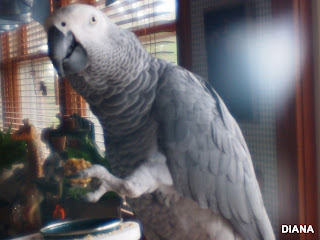What kind of lenses? For those who don't know but are interested, what follows is a brief summary. For those who don't know or care, come back tomorrow, when we'll probably say some mean things about a defenseless old picture.
If you have an iPhone or Android smarty-pants phone, you've probably heard of or downloaded a program called Hipstamatic (iPhone) or Vignette (Android). These are camera apps that simulate the look of old obsolete cameras in your nice, modern, advanced phone camera. In the same way that some people like the crackle of vinyl, lots of people like the old faded look of Polaroid photos or the light leaks, streaks, and blurs of a Holga or Diana camera.

The Holga was an inexpensive plastic camera produced in China in the Eighties. Even the lens was plastic. It leaked light onto the film and build quality was questionable. This all contributed to the randomness of the photographic results. You can still buy Holgas at hipster stores like Urban Outfitters, but it'll be a film camera. You still have the cost of buying and developing film, and of course you can't see how your photos turn out until you spend the money to have them developed.
The Diana was also an inexpensive plastic-bodied, plastic-lensed camera made in Hong Kong in the Sixties. Pictures taken with the Diana were similarly wonky and unpredictable as with the Holga.
Both of these cameras have been enjoying a kind of renaissance in the last few years, in addition to their softwarey dopplegangers for various camera phones.
Well, you can also just buy their lenses and stick them onto your digital camera. This is what I did. In addition to the Holga and Diana lens, I bought Photojojo's "Lo-fi" lens. So what are the differences? Well, the Holga and Diana lenses can be bought for about $20 - $30 on Amazon (which is where mine came from) and Ebay, plus maybe fifteen dollars for an adapter which I needed to get the Diana lens onto my Micro four-thirds camera. If you really want to, you can buy the same Diana lens from Photojojo for sixty dollars, if that's what you're into. In exchange for simply dtriple the price, you do get their cutesy "Yay! Your goodies have shipped" emails. The Photojojo "Lo-fi" lens costs $90, and is clearly marked as a CCTV (closed-circuit television / security camera) lens with a specially made adapter for your camera. Turns out you can get the exact same lens for $30 on Ebay. It even comes with a micro four thirds adapter to pop right on a non-CCTV camera. Of course, Photojojo does not mention that the lens has the words "TV Lens" inked right on it, or that the box it comes in also obviously designates it as a repurposed security camera lens. If a customer knew that, a customer might go and look elsewhere for the exact same product at one-third the price. "Yay! I'm a sucker! Wheeee!"
 |
| Left: Ebay, $34.99 Right: Pjotojojo: $90, plus shipping. Wow. |
 |
| "I'm worth every penny, Tee-hee!" |
The Diana and Holga lenses are totally plastic and are very light. They feel as flimsy and junky as you'd expect, but that's what you sign up for when you buy these. They each have a focus ring.
The CCTV PJJ lens is all metal, is much heavier, and even has a little iris in it, which you can adjust via a ring on the lens. There is also a focus ring. Note that the aperture created by the iris is not exactly round. Again, build quality is not what you should be hoping for when you buy things like this. You want some wonkiness in your retro pictures. This lens is pretty cool. I just wish I'd done more homework before I ordered.
Anyway, here are some sample pictures. Generally, the Holga requires much more light, due to the tiny pinhole aperture on the back. Pictures have a lot of vignetting (dark edges). The Diana has the "dreamy" look everyone talks about, due to the soft-focus quality of the cheap plastic lens. Pictures are brighter than the Holga. Also, the Diana is more likely to have random light blurs coming in from the side of the frame, as in the bird picture below. The Photojojo lens is the most adjustable, thanks to the built-in iris. Pictures tend to have lots of concentric smearing at the edges, like you see in the tree picture.

























































